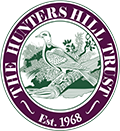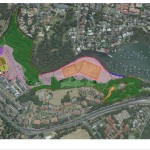It’s a long time since October 2011, when Council agreed to revise the Plan of Management for Riverglade Reserve.
The issues of concern are:
- shared use of the reserve by walkers, cyclists, organised sport
- landscape for wildlife corridors
- community involvement in changes to the use of the reserve
- the location of playing fields for organised sport
- car parking arrangements
- design and location of toilets & playgrounds
- management of hazardous materials
- exercise of dogs.
Council appointed a consultant to prepare a Draft Plan which was put on public exhibition in August 2012. (http://www.huntershill.nsw.gov.au/Page/Download.aspx?link=../Files/ZoningPlan.pdf&size=5301766&name=Zoning%20Plan)
Now it is 2013, and here is a summary of recent progress towards the adoption of a revised Plan:
- All groups and individuals who made submissions to the draft Plan of Management (PoM) for Riverglade Reserve were invited to meet at Council on 11 December.
- The consultant is now amending the draft Plan, and will brief Councillors in February, before it is presented to Council for adoption, perhaps in February.
- Council has now placed on public exhibition its Draft Sport and Recreation Strategy,(http://www.huntershill.nsw.gov.au/Page/Page.aspx?Page_Id=910) prepared by the same consultant. Although previously unavailable, and still only in draft form, this document is the basis for the recommendations regarding the use of Riverglade Reserve for organised sport. This document has been two years in preparation, and is on public exhibition until 4pm, Friday 8 March.
The meeting of 11 December 2012
Our invitation to this meeting described it as ‘for groups/individuals that provided comments on the draft Riverglade Reserve Plan of Management during the recent Exhibition period. The meeting, with Councils consultant, Kym Shilton will provide an opportunity to discuss the comments and the proposed response with a view to finalising the Plan.’
A total of 12 people attended (in addition to consultant, Kym Shilton, and Margaret Kelly, Manager Community Services, who is in charge of the review of the PoM). Surprisingly, no representatives of sporting clubs, or of schools that use the reserve, attended.
The consultant provided copies of her summaries of the 14 written submissions received. Over two hours, the meeting discussed these submissions and associated issues. Below are given Council’s minutes, then our comments on the minutes, and on items not reported in those minutes.
Copies of the consultant’s summaries, and of Council’s minutes of the meeting, are available from The Trust (and presumably from Council).
A) Comments on items listed in Council’s minutes
1. Access through Villa Maria land
Submission 1 suggested adding a new entry track leading from the intersection of Richmond Cres and Mary St down to the main path over Tarban Creek to finish just below the ponds. Such a track need not pass through Church lands.
2. Proposed carpark off Waruda Place
As the minutes note, there was no support for allowing carparking beyond the end of Waruda Place, and instead it was suggested that this area should be planted with native trees and shrubs to enhance the wildlife corridor linking through the reserve to Huntleys Point.
3. Proposed additional carpark off Manning Rd
At present a small colony of flying foxes is based in some camphor laurels near the Priory; any increase in carparking here should be away from these trees.
4. Playground
The meeting agreed that the best location for a children’s playground is below the Priory, which is convenient to Manning Rd car parking, and to any coffee shop etc that might be established at the Priory. Play equipment could be integrated into the sloping grassed area, as it is at the new playground in Byrnes St, Rozelle (in King George Park, just beyond the new Iron Cove Bridge).
5. Toilets
The majority of participants agreed that there is a need for toilets at Riverglade Reserve, preferably close to the playground (near the Priory, and close to the major entry to the Reserve). There was some support for a simple additional toilet (without change rooms or equipment storage space) near the playing fields, such as currently provided by the use of ‘Portaloos’ during the soccer season.
6. Playing fields (use for organised sport)
As the Master Plan included in the Draft PoM shows, with two marked soccer pitches (one full-size, and one ¾-size), the boundaries are so close to the seawall that those using the water-side path feel threatened by players and onlookers spilling onto the path. In addition to able-bodied adults and cyclists, the path is also used by the very old and the very young. Due to the limited space, the only solution to this problem is to move the pitch boundaries away from the water’s edge, which will limit the reserve to a single full-size pitch or two ¾ size pitches.
Council has agreed to enforce a rigorous booking system for organised sport on the reserve, and there was also discussion of restricting organised sport by the number of players allowed, the number of hours per day or weekend, and perhaps allowing games only on Saturdays.
Interesting suggestions proposed by the consultant are to provide additional playing fields on the Horse Paddock (in Woolwich), and to encourage schools located in Hunters Hill to share their sporting fields with sporting clubs, especially those schools that use Council playing fields (see the Draft Sport & Recreation Strategy).
7. Carparking
Carparking and associated congestion in surrounding streets has only been a problem when the playing fields are being used for organised sport, particularly for junior games. It is essential that Council’s rangers enforce parking restrictions rigidly during such times to ensure access for emergency vehicles, and to allow residents access to their houses.
8. Involvement of Community in future
Although the current (1999) Plan of Management placed emphasis on continuing consultation in the management of Riverglade Reserve, in practice there was no public consultation regarding recent changes at all (changes to the use of the reserve were not even discussed at Council Meetings). Council seems reluctant to set up a mechanism to ensure consultation in the future, so the meeting suggested several options, including that:
- Council establish a Reserves Advisory Committee, meeting four or six times a year, covering all Hunters Hill reserves,
- through Council Precinct Committees (proposed by Richard Quinn, when standing for election as mayor: see The Weekly Times, 5 Sept 2012).
9. Hazardous materials remaining from when the reserve was used as a tip
The meeting was reminded that in the past much of the land at Riverglade Reserve was used as a tip. Some areas where such material is exposed, and any where the soil moved, need to be checked and certified as safe before the public is given access.
B) Other items discussed at the meeting
1. Exercise of dogs
The meeting was happy to accept the recommendation that dogs be allowed off-lead over the whole of the flat area adjacent to the seawall (except when actually in use for organised sport), and on-lead on the sloping, grassed areas, but be discouraged from entering the bush areas.
2. Paths
The existing water’s-edge path is recognised by Council as a Shared User Path for use by cyclists as well as pedestrians, but does not meet recognised guidelines for such paths (it is too narrow, and too close to the seawall). It was suggested that a separate path be provided for cyclists, or that a much wider path is required, located back from the seawall.
3. Permanent facilities for sporting clubs
The meeting was opposed to the construction of permanent facilities (beyond the locker currently provided beneath the bridge connecting to Joley Pde) for the purpose of organised sport.


Leave A Comment